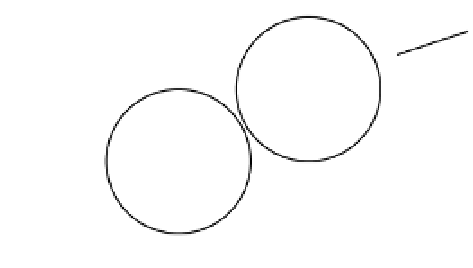Game Development Reference
In-Depth Information
Figure 7-25.
A schematic of the collision of a baseball and bat
Simulating Other Sports
The list of sports is endless, and there is not room in this chapter to cover the modeling aspects
of all of them. The good news is that many of the concepts covered in this chapter are appli-
cable to many different sports. For example, when balls (or people for that matter) are thrown,
kicked, or pushed into the air, they become projectiles, and the same basic concepts can be
used to model their flight.
No matter what other sport you are trying to model, the same force considerations will
apply. The force of gravity will always be present. Depending on the sport that you are modeling,
you may also have to account for the forces of aerodynamic drag, wind, and spin. In some
sports, such as hockey, friction will be an important force. In other sports, such as football,
the ball may tumble in strange ways. In any case, the general modeling process is the same:
1.
Define the force diagram for the required objects.
2.
Determine the equations of motion that need to be solved.
3.
Solve the equations of motion either directly or with an ODE solver.
Football
American football is one of the relatively few sports in which the ball isn't round, but rather is
an oblong spheroid. When a quarterback throws the football, he imparts a spin to it known as
a spiral. The spin acts to stabilize the football in flight in a similar way that spin is given to a
bullet to stabilize its flight.
A football in flight will be subject to the forces of gravity, aerodynamic drag, and wind. The
Magnus force experienced by a football is probably not great enough to significantly affect its
trajectory. The drag coefficient for a football depends on whether the ball is in a spiral or is
tumbling. A football that is tumbling will experience a higher drag coefficient.














